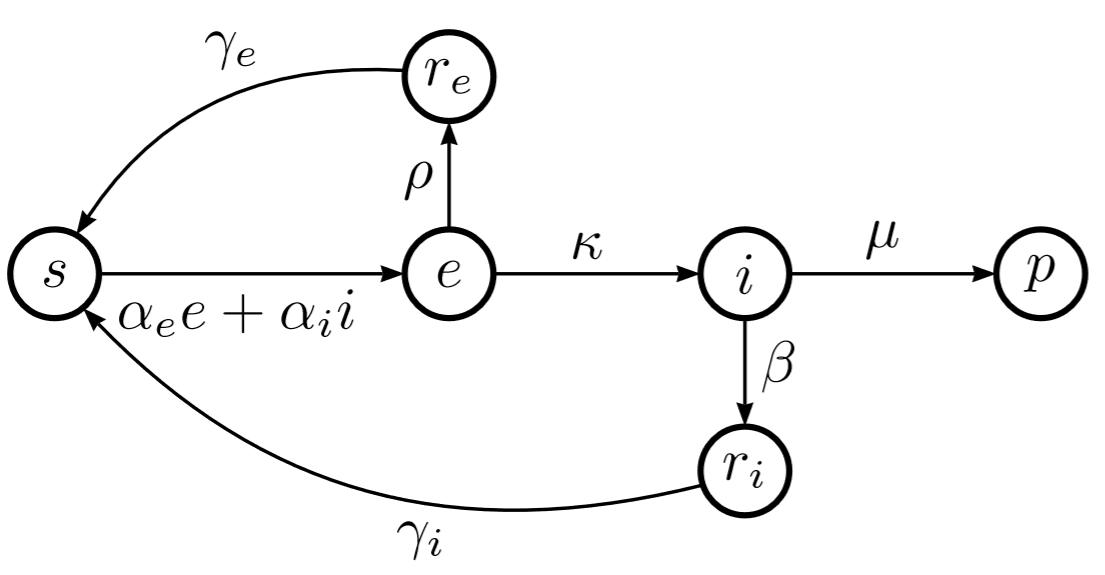Mathematical Modeling of Epidemic Diseases; A Case Study of the COVID-19 Coronavirus
The outbreak of the Coronavirus COVID-19 has taken the lives of several thousands worldwide and locked-out many countries and regions, with yet unpredictable global consequences. In this research we study the epidemic patterns of this virus, from a mathematical modeling perspective. The study is based on an extensions of the well-known susceptible-infected-recovered (SIR) family of compartmental models. It is shown how social measures such as distancing, regional lockdowns, quarantine and global public health vigilance, influence the model parameters, which can eventually change the mortality rates and active contaminated cases over time, in the real world. As with all mathematical models, the predictive ability of the model is limited by the accuracy of the available data and to the so-called level of abstraction used for modeling the problem. In order to provide the broader audience of researchers a better understanding of spreading patterns of epidemic diseases, a short introduction on biological systems modeling is also presented and the Matlab source codes for the simulations are provided online.
PDF Abstract